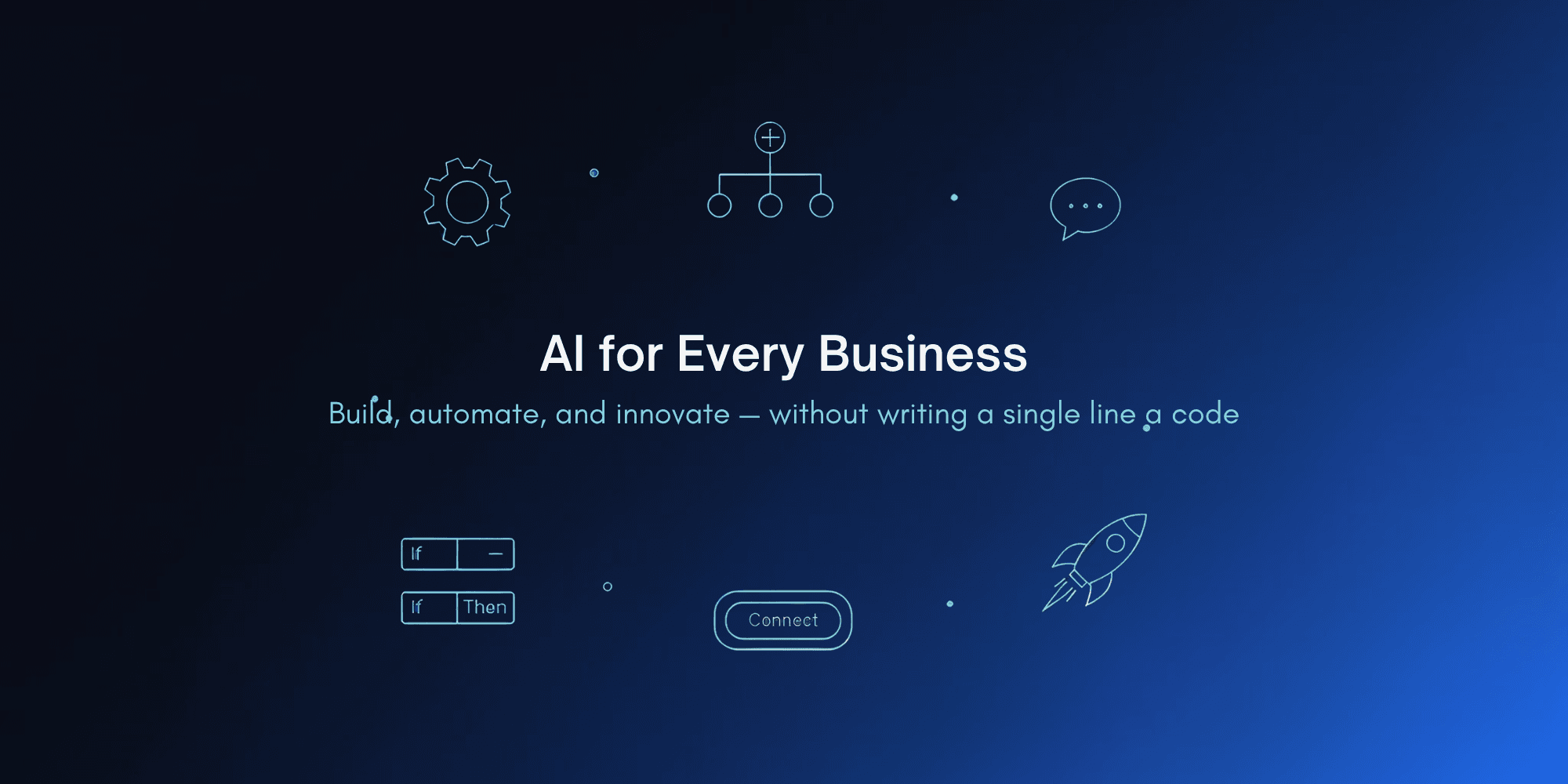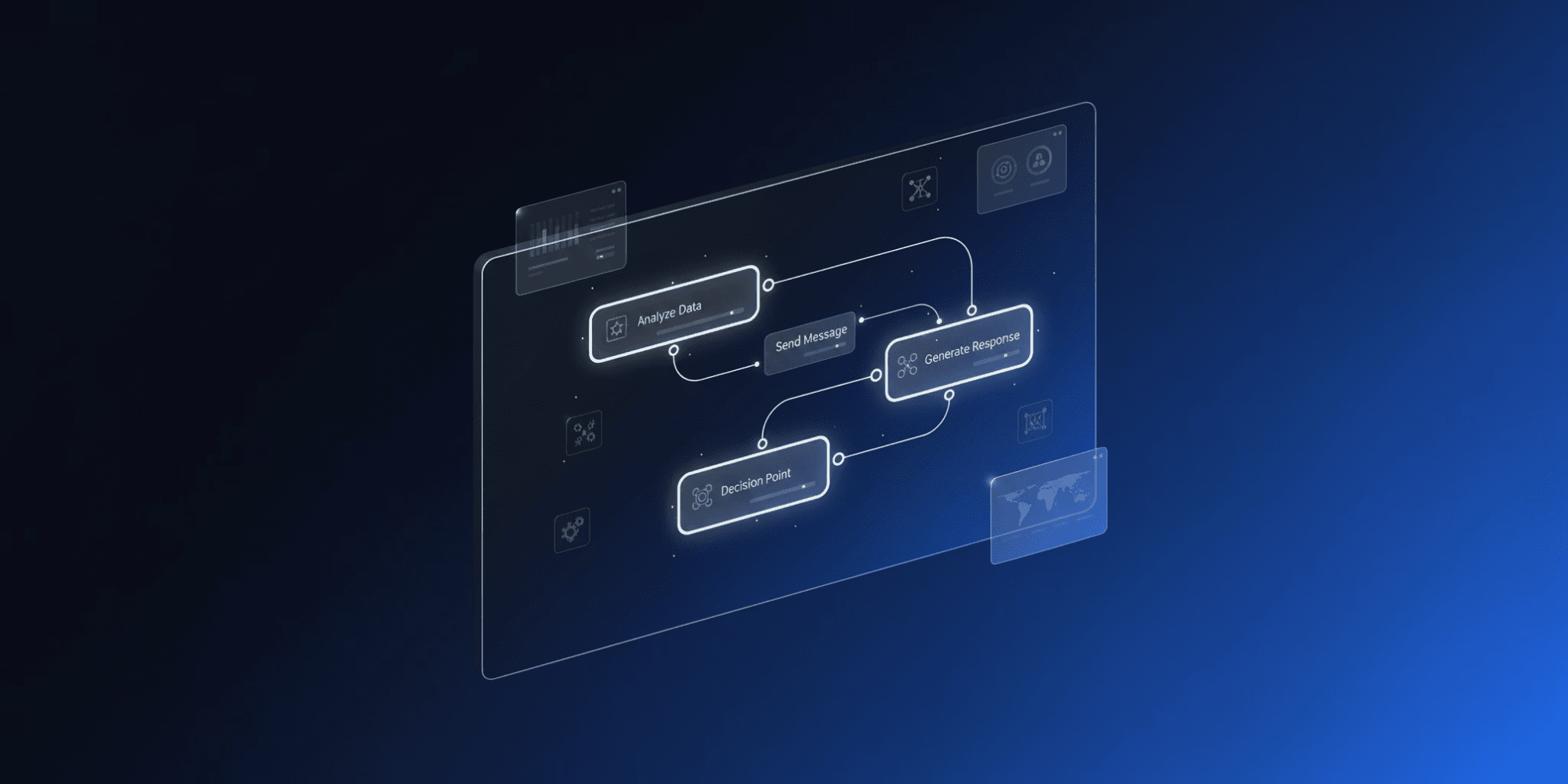
For years, automation felt like something reserved for companies with deep pockets and engineering teams on speed dial. The narrative was always the same: if you wanted to streamline your operations or leverage AI, you needed developers, data scientists, and months of implementation time. Small businesses and lean teams watched from the sidelines as enterprise giants automated their way to efficiency, wondering when their turn would come.
That story is changing. The rise of no-code AI platforms is fundamentally reshaping who gets to build, automate, and innovate with technology. What once required specialized knowledge and significant resources is now within reach of anyone with a clear understanding of their business needs and a willingness to experiment.
The Rise of No-Code AI Platforms
The no-code movement started with a simple observation: most people who need technology solutions aren't programmers, and they shouldn't have to become programmers to solve their problems. This philosophy has evolved from basic website builders into sophisticated platforms capable of handling complex AI-driven automation.
No-code AI platforms represent the natural progression of this democratization. They've taken artificial intelligence—arguably the most technically demanding frontier in technology—and made it accessible through visual interfaces, pre-built components, and intuitive workflows. Instead of writing code to connect systems or train models, users can drag, drop, configure, and deploy.
This shift matters because it changes the fundamental equation of digital transformation. When technical barriers fall, speed increases. When specialized knowledge becomes optional, creativity flourishes. The bottleneck shifts from "can we find someone to build this?" to "what do we actually need to accomplish?"

Why Accessibility Matters
Consider a small customer service team drowning in repetitive inquiries. They know exactly which questions come up repeatedly, which responses work best, and where their time would be better spent. In the traditional model, they'd need to convince leadership to fund a development project, wait months for implementation, and hope the final product matches their vision.
With accessible automation tools, that same team can design and deploy their own solution. They understand the nuances of customer communication better than any external developer could. They know which edge cases matter and which don't. When they can build automation themselves, the result often fits their needs more precisely than anything specified through layers of documentation and translation.
This accessibility creates ripple effects across organizations. Marketing teams can experiment with personalized campaigns without waiting for IT support. Operations managers can optimize workflows based on real-time insights rather than quarterly planning cycles. Founders can test ideas quickly before committing significant resources.
The playing field doesn't just level—it opens up entirely new possibilities. A startup with three employees can automate customer onboarding with the same sophistication as a corporation with three thousand. A nonprofit can deploy AI-powered support systems without diverting funds from its mission. The constraint shifts from technical capability to imagination and strategy.
The Real Benefits of Going No-Code
Speed might be the most immediately obvious advantage. When you remove the need to write, test, and debug code, automation projects that once took months can launch in days or even hours. But speed alone doesn't capture the full picture.
There's something powerful about being able to iterate quickly. Traditional development cycles often lock you into decisions made during the planning phase. By the time a solution launches, business needs may have evolved. No-code platforms let you adjust as you learn. You can test an approach, see how it performs in real conditions, and refine it without starting from scratch. This creates a different relationship with technology, less like commissioning a building and more like arranging furniture until the space feels right.
Cost-efficiency emerges not just from avoiding developer salaries, though that matters. The bigger savings come from reduced friction and faster feedback loops. When business users can solve their own problems, companies avoid the coordination costs of translating needs across departments. When experiments can run quickly and cheaply, organizations learn what works without betting everything on untested assumptions.
Flexibility becomes possible in new ways. You're not locked into vendor timelines or dependent on specific individuals who understand your codebase. Business needs change, and no-code automation can change with them. The person who designed a workflow can also modify it when circumstances shift.
Perhaps most interestingly, no-code platforms foster a kind of creative confidence. When people realize they can actually build the tools they imagine, they start imagining more ambitious possibilities. Teams begin identifying automation opportunities they would have previously dismissed as too complex or too expensive to pursue. The question shifts from "what can we afford to build?" to "what would make our work better?"
How Platforms Like Diaflow Make It Real
Understanding the concept of no-code AI is one thing. Seeing how it works in practice is another. Diaflow exemplifies this approach by focusing on making AI automation genuinely accessible without oversimplifying what's possible.
The platform provides pre-built templates for common business workflows, customer support, lead qualification, data processing, and content generation. So teams don't start from a blank canvas. These templates aren't restrictive frameworks that force businesses into standardized processes. They're starting points that demonstrate what's possible and can be customized to match specific needs.

Diaflow's AI agents handle the complex parts, understanding natural language, making contextual decisions, and integrating with various systems while presenting users with straightforward configuration options. A customer service manager can set up an intelligent routing system without understanding machine learning. A marketing coordinator can deploy personalized response workflows without writing API integrations.
The workflow builder uses visual elements that make logical sense: if this happens, then do that. Connect this data source to that action. Route inquiries based on these criteria. It's the kind of logical thinking business professionals already do; the platform just translates it into functioning automation.
What makes this approach effective isn't just the technology, it's the philosophy behind it. The platform assumes users are intelligent people who understand their business deeply, even if they don't know programming. It respects that expertise by making the powerful capabilities available without demanding technical translation.
The Bigger Picture
The emergence of no-code AI platforms signals something larger than just easier software. It represents a fundamental shift in who gets to shape how technology serves business needs. For decades, there has been a gap between those who understand business problems and those who build technical solutions. No-code tools don't eliminate the need for developers; complex custom solutions will always require specialized skills, but they do remove the mandatory dependence on technical gatekeepers for straightforward automation.
This matters for innovation. When more people can experiment with AI and automation, more diverse perspectives shape how these tools evolve. Solutions emerge from unexpected places. Small companies move quickly on ideas that larger competitors might overlook. Teams find creative applications that pure technologists might not imagine.
It also matters for competitiveness. Businesses that can automate efficiently gain time to focus on what truly differentiates them. When routine tasks handle themselves, human attention goes toward strategy, creativity, and the kind of complex problem-solving that machines still can't replicate.
The story of business automation is entering a new chapter. The question is no longer whether automation and AI are relevant to your organization; the question is how to leverage them effectively. They are. The question is how quickly you can start experimenting, learning, and adapting these tools to your specific context, and whether technical barriers will slow you down or whether accessible platforms will let you move at the speed of your ideas.

Start Automating Without the Complexity
The democratization of AI automation means your team can start solving real problems today, not months from now. What matters isn't whether you have developers on staff—it's whether you understand what slows your business down and can envision better ways to work.
Diaflow puts that vision within reach. Configure AI agents to handle repetitive tasks, connect your existing tools without integration headaches, and watch workflows come to life through drag-and-drop simplicity. The learning curve is measured in hours, not months.
Ready to experience it yourself? Explore Diaflow and see how quickly you can transform ideas into working automation. Start with templates or build from scratch—the choice is yours, and the barriers are gone.



